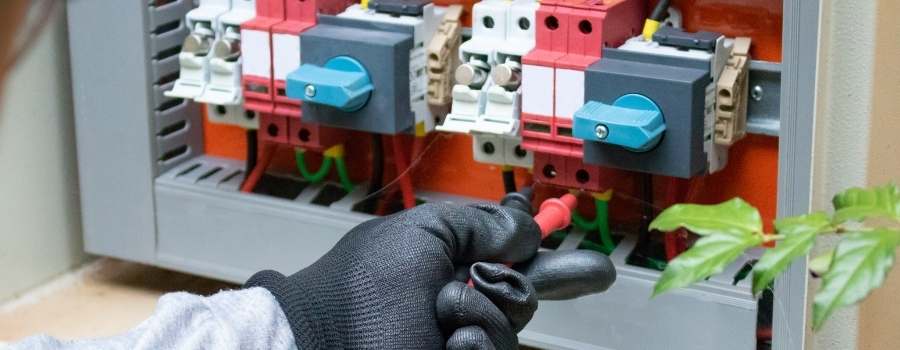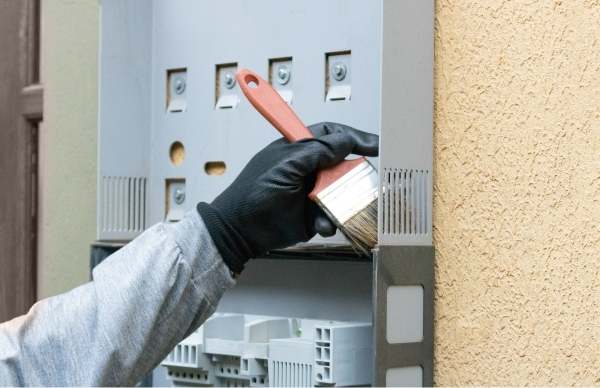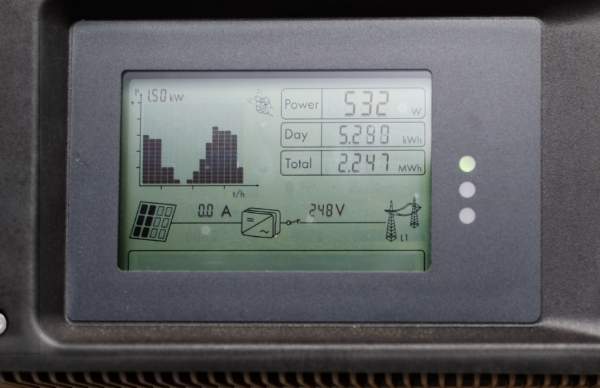Solar inverters are a crucial part of any solar power system. These complex electrical devices invert the direct current (DC) electricity from your solar panels to alternating current (AC) electricity, similar to standard grid power. But how long do these inverters last before you have to buy a new one?
In general, solar inverters last anywhere from 10 to 25 years, depending on the type. String inverters, battery-based inverters, and hybrid inverters have an average lifespan of 10 years. However, microinverters last for 15-25 years.
You can maximize an inverter’s lifespan by keeping it in a cool, well-ventilated area and maintaining it regularly.

If there’s one part of your solar power system that you can call its ‘heart’, the inverter would be it. In this guide, you’ll discover how long each type of solar inverter last, what factors reduce their lifespan, and the steps you can take to make them last as long as possible.
How Long Does A Solar Inverter Last?
Most solar inverters can last 10 years, with some lasting up to 25 years. However, the total lifespan will depend on the type of inverter you have.
Overall, residential solar power systems can last up to 30 years. So, you’ll likely experience a worn-out inverter in your setup at least once and have to replace it with a new one.
As the internal components wear out from extended use, your inverter will become less efficient and more prone to failure as it reaches the end of its useful lifespan.
Are All Solar Inverters The Same?
Not all solar inverters are the same. Instead, several different types of solar inverters are available on the market. Not only do they differ in how they work, but as you’ve seen above, they’re also different in terms of how many years they last.
Here are the kinds of solar inverters available on the market, how they work, and how long they’ll last:
- String Inverter (10 years): String inverters are the most common that you’ll find around, primarily because they’re the most affordable type. They only work for solar power systems tied to the power grid.
- Micro Inverter (15-25 years): You can get micro inverters that perform better and last longer for a higher price. These are called ‘micro’ inverters because they attach directly to individual solar panels instead of being placed alongside other parts of the solar power system on the ground or indoors.
- Battery-Based Inverter (10 years): Let’s suppose your solar power system is completely off the grid and works only with batteries. In that case, battery-based inverters are the kind you’ll use.
- Hybrid Inverter (10 years): Hybrid inverters are similar to string inverters. However, they can also help charge and discharge batteries, which earns them the term ‘hybrid’ in its name.
As you can see, the lifespan of your inverter is partially determined by the type of solar system setup you have.
While most inverters have an average lifespan of 10 years, one that relies on micro-inverters will last significantly longer.

What Affects The Lifespan Of A Solar Inverter?
Besides the type of solar inverter you decide to use, several other factors also determine how long the unit will last.
Individual models can have different lifespans even among one type of solar inverter. In addition, other factors determine how long each model will last, including the brand you buy from, its quality, warranty, operating temperatures, and ventilation, which all play a crucial role in the inverter’s lifespan.
Let’s take a closer look at each factor that determines how long your solar inverter will last:
- Brand and Quality: Brand names matter. When you invest your hard-earned money in a solar inverter by a reputable brand, you can rest assured that it’ll last longer than one from an unknown brand. In addition, leading brands are more likely to use higher quality parts in their more durable inverters.
- Warranty: Aside from the brand and quality of the inverter that you choose, you must also pay attention to the warranty coverage provided. Warranties don’t guarantee that an inverter will last for many years. However, if your inverter fails prematurely, the warranty prevents you from having to pay for a new one.
- Temperature: You might notice that various components in your solar power system have an optimum temperature range. The same is also true for inverters. Using the inverter in temperatures can cause it to wear out sooner than average, shortening its overall lifespan.
- Regular Maintenance: Aside from the solar inverter itself and the environment you put it in, the unit’s lifespan also depends on how well you maintain it. Keeping the unit well-ventilated and quickly resolving any issues it might have will ensure that it provides you with value for as long as possible.
What Causes Solar Inverters To Fail Prematurely?
No matter the kind of solar inverter you have, there are plenty of circumstances that can unnecessarily shorten its lifespan.
Here are the top 5 reasons why your solar inverter doesn’t last as long as it should:

1. Installation Issues
Your solar inverter could have been doomed to a shorter life from the moment you had it installed. Incorrect installations, like pairing solar panels and inverters with capacities that don’t match, will prevent the inverter from working efficiently.
Under those conditions, even the best solar inverters will not last as long as you’d expect.
2. Lack Of Maintenance
Like every other component in your solar power setup, the inverter needs regular maintenance and care.
The most important goal of maintaining your solar inverter is to prevent dust and excess humidity from affecting it.
Firstly, dust can find its way into the unit and onto its circuit boards, potentially causing a short circuit. Besides that, excess humidity can speed up corrosion, causing the inverter’s electrical terminals and connections to rust quicker.
3. Grid Problems
Unfortunately, some of the issues that can harm solar inverters are beyond your control. That’s particularly true with grid-connected solar power systems.
When the system connects to the grid, the inverter faces the risks associated with over-and under-voltage. In simpler terms, grid voltages that are too high or low can be problematic for the inverter and stop it from functioning correctly.
4. Overheating
Your solar inverter’s placement is also critical. Solar inverters rely on several electrical components inside, which are sensitive to extreme temperatures.
So, installing the inverter with little ventilation or under the hot sun will cause the unit to overheat quickly.
When those conditions continue for extended periods, it can cause damage to the solar inverter’s components and reduce its overall lifespan.
5. Unresolved Fault Codes
Solar inverters will experience the occasional problem. When that happens, it’ll tell you what the problem is by displaying fault codes. You must resolve the issue and clear the code as soon as possible.
Leaving minor issues unresolved can lead to more severe problems, causing the inverter to fail prematurely.

How Can I Maximize The Lifespan Of A Solar Inverter?
Despite the limited lifespan of a solar inverter, there are several steps that you can take to make it last as long as possible.
Here are 5 ways you can maximize the lifespan of your solar inverter:
- Correct sizing: Even before you install your solar inverter, you can help to maximize its lifespan by choosing the correct one for your solar power system. As a rule of thumb, the capacity of your panels should be up to 133% of the inverter’s capacity.
- Location and placement: Once you get your solar inverter, install it in a place with low humidity and plenty of ventilation. More importantly, the inverter should be away from any direct sunlight. Finally, for setups with multiple inverters, make sure there’s enough room between each of those inverters.
- Cleaning and maintenance: Don’t forget that your solar inverter needs regular attention after installing it. For starters, you clean all parts of the inverter and its surrounding area to prevent any dust buildups. Doing so will prevent overheating, as the inverter can ‘breathe’ easily and regulate its temperature.
- Check warning indicators: Lastly, when you clean and maintain your solar inverter, check for any active error codes or other indicators. Remember: you must always resolve any issues with your solar inverter while they’re still minor. If not, they could lead to more significant problems that shorten the device’s lifespan.
- Be aware of warranties and extended warranties: Lastly, you should ensure that you understand the warranty coverage you’re entitled to. Some manufacturers also offer the option of purchasing an extended warranty which is worth considering. Again, warranties themselves don’t lengthen your inverter’s lifespan. But in the case of a premature failure, they save you from spending your budget on a new inverter unnecessarily.
Final Thoughts
You should understand that solar inverters can last a relatively long time with everything you’ve seen above. Still, they’re complex electrical devices that require cleaning and maintenance to maximize their useful lifespan.
By taking excellent care of your solar inverter, you won’t have to deal with the device failing too soon or forcing you to purchase a replacement.
